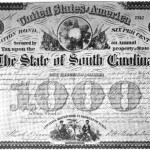List of Bonds and description
* Fixed rate bonds have a coupon that remains constant throughout the life of the bond.
* Floating rate notes (FRNs) have a variable coupon that is linked to a reference rate of interest, such as LIBOR or Euribor. For example the coupon may be defined as three month USD LIBOR + 0.20%. The coupon rate is recalculated periodically, typically every one or three months.
* Zero-coupon bonds pay no regular interest. They are issued at a substantial discount to par value, so that the interest is effectively rolled up to maturity. The bondholder receives the full principal amount on the redemption date. An example of zero coupon bonds is Series E savings bonds issued by the U.S. government.
* Inflation linked bonds, the principal amount and the interest payments are indexed to inflation. The interest rate is normally lower than for fixed rate bonds with a comparable maturity (this position briefly reversed itself for short-term UK bonds in December 2008). However, as the principal amount grows, the payments increase with inflation.
* Subordinated bonds are those that have a lower priority than other bonds of the issuer in case of liquidation. In case of bankruptcy, there is a hierarchy of creditors. First the liquidator is paid, then government taxes, etc. The first bond holders in line to be paid are those holding what is called senior bonds. After they have been paid, the subordinated bond holders are paid. As a result, the risk is higher. Subordinated bonds usually have a lower credit rating than senior bonds.
* Equity-linked notes and Bonds indexed on a business indicator or on a country’s GDP.
* Asset-backed securities, interest and principal payments are backed by underlying cash flows from other assets.
Examples of asset-backed securities are mortgage-backed securities, collateralized mortgage obligations and collateralized debt obligations.
* Book-entry bond is a bond that does not have a paper certificate. As physically processing paper bonds and interest coupons became more expensive, issuers (and banks that used to collect coupon interest for depositors) have tried to discourage their use.
* Perpetual bonds are also often called perpetuities or ‘Perps’. They have no maturity date. The most famous of these are the UK Consols, which are also known as Treasury Annuities or Undated Treasuries. Some of these were issued back in 1888 and still trade today, although the amounts are now insignificant. Some ultra-long-term bonds, sometimes a bond can last centuries.
* Bearer bond is an official certificate issued without a named holder. The person who has the paper certificate can claim the value of the bond. Often they are registered by a number to prevent counterfeiting, but may be traded like cash.
* Registered bond is a bond whose ownership (and any subsequent purchaser) is recorded by the issuer, or by a transfer agent. It is the alternative to a Bearer bond. Interest payments, and the principal upon maturity, are sent to the registered owner.
* Treasury bond, also called government bond, is issued by the Federal government and is not exposed to default risk. It is characterized as the safest bond, with the lowest interest rate. A treasury bond is backed by the “full faith and credit” of the federal government. For that reason, this type of bond is often referred to as risk-free.
* Lottery bond is a bond issued by a state, usually a European state. Interest is paid like a traditional fixed rate bond, but the issuer will redeem randomly selected individual bonds within the issue according to a schedule. Some of these redemptions will be for a higher value than the face value of the bond.
* War bond is a bond issued by a country to fund a war.
* Serial bond is a bond that matures in installments over a period of time. In effect, a $100,000, 5-year serial bond would mature in a $20,000 annuity over a 5-year interval.
* Revenue bond is a special type of municipal bond distinguished by its guarantee of repayment solely from revenues generated by a specified revenue-generating entity associated with the purpose of the bonds.


